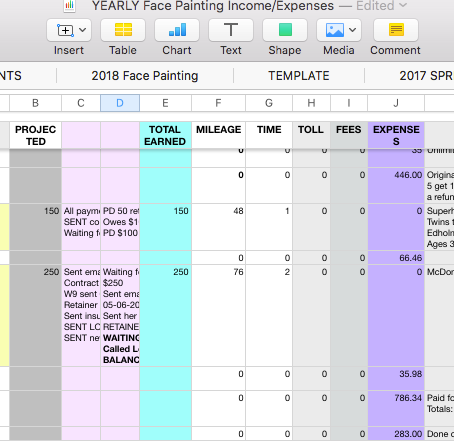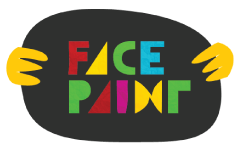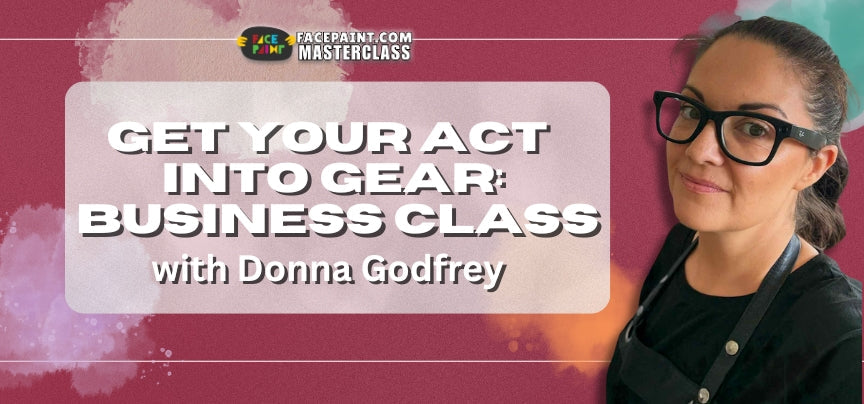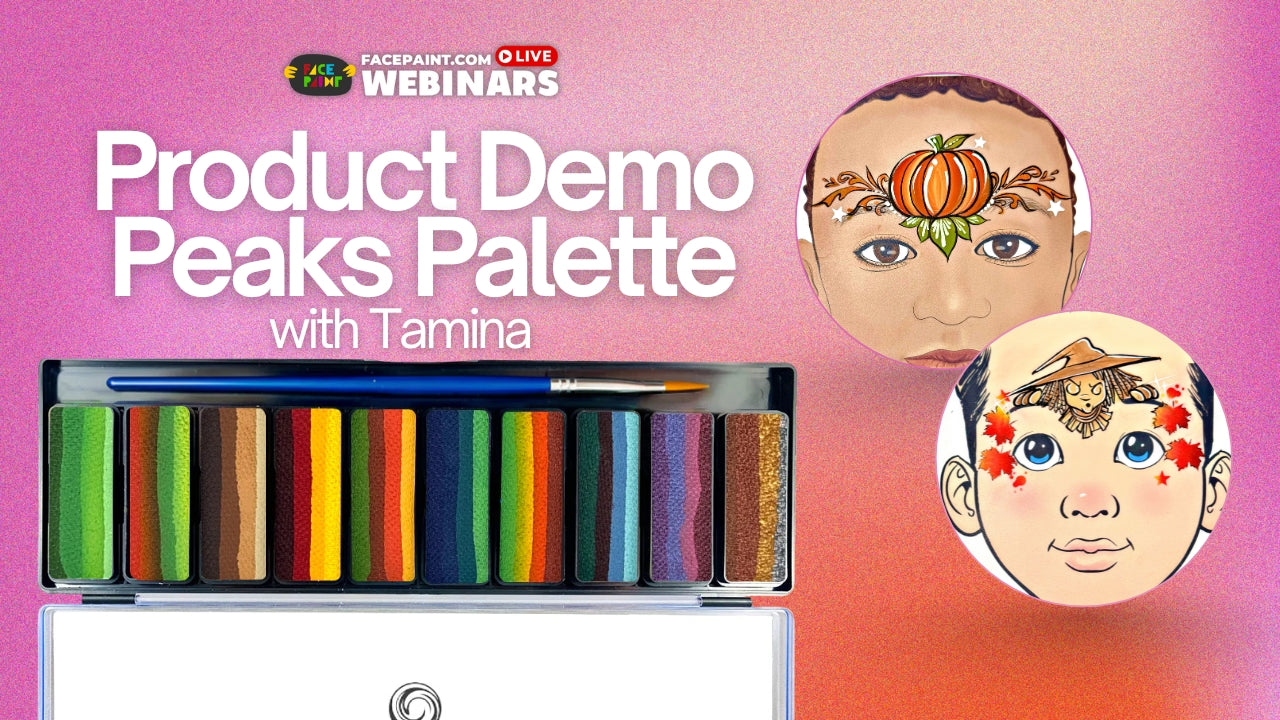One difficult decision a face painter must make when starting a business is what to charge. You may prefer an hourly rate or a per child rate for events, but either way, you’ll have to take a number of factors into consideration before you come to a final amount. To avoid some of the hidden costs which aren’t obvious at first, it’s important to do research so you’ll be able to make a wise choice for your business from the beginning. Here are some tips which will help you choose your rate.
What Should You Charge as a Face Painter?
1. Research the current rates being charged by other face painters in your area.

Rates can be a sensitive topic, because as you enter the local market with your fresh enthusiasm for face painting, established veterans may not be quite as thrilled at the thought of yet another competitor hanging out a shingle. Nonetheless, it’s important that you become aware of the going rate in your area and place your own rates somewhere in that established range. Discovering the general rates for the area and understanding the reasons behind those rates is part of establishing yourself as a true professional.
If you’re new and your skill level is lower, then your prices will naturally run at the lower edge of the rate range in the beginning. They should not be unusually low or dip below that threshold, primarily because there are reasons seasoned face painters charge what they charge. People who have been running a face painting business for some time know what it costs to operate the business. Don’t assume they are setting their prices high to gouge the customer. It’s more likely their prices are set where they are because they cannot make a reasonable income if the prices are lower.
If an artist’s rates are far below the normal market for the area, it could be the artist isn’t paying taxes, is using substandard supplies, or is not paying herself for her non-painting work hours, which leads us to the next tip. It’s important to keep track of all your expenses and time so you know what you’re really making per hour.
2. Keep a spreadsheet with all income and expenses

If you’re running a business, you should know exactly what it costs you to run it. Sometimes a new face painter will set a rate far below the market in their area because the rate seems high. Your spreadsheet should be set up in such a way that you can track your gross income, your expenses, and your net income as you move through the year. This will help you determine if you are actually making a profit or not at the rate you have chosen.
Generally, expenses will swallow at least 30-50% of your gross income, although in the first year, it could be a higher percentage because your initial equipment and set-up costs will be greater at the beginning.
3. Don’t forget taxes

Keeping an electronic spreadsheet will not only enable you to track your daily business costs, but it will prepare you for tax time at the end of the year. If you’ve never run your own business, you’re going to be in for a bit of a shock. When you’re self-employed in the United States, you pay around 30% of your net income to Uncle Sam instead of just 15%. (Also, check the laws in your state, because some states require that you pay sales tax.) Make sure you set your taxes aside as you go, and if you have a CPA, ask him to help you set up quarterly payments to avoid a huge tax bill at the end of the year. When you’re choosing your rate, you need to remember that you’re going to take a sizable chunk out of your net income for taxes.
4. Be realistic in evaluating not just what you charge per hour, but what you make per hour.

What you charge per hour for face painting is not what you make per hour when you take into account all of the time you spend running your business. Set up a second spread sheet to track your work hours for a few months, and track ALL of your hours. This includes the hours answering phone calls and emails, sending out quote responses, working on your website, designing promotional materials and signage for events, practicing and training in classes and workshops, and traveling to events and setting up and tearing down your equipment as well as actual painting time. If you count every hour, you’re most likely putting in at least a 30 to 40 hour work week, and probably more in the busy season.
As it turns out, the vast majority of the hours you will work as a professional face painter are “unpaid” hours. Once you take out expenses and taxes, you have to divide what’s left of your net income between all the hours you work each week to figure out your true hourly wage.
If you’re good at time management, careful in your expenses, and you have steady work, you’ll make minimum wage or better. If you waste time and don’t have many gigs (at least at first), you won’t be making much. Either way, you should make sure that your rates aren’t so low that you can’t pay yourself for your non-painting hours. They qualify as work, too. Don’t ignore them while creating your rates.
The advantage of tracking your hours is that you should be able to estimate the number of painting hours necessary at a given rate to sustain your non-working hours and to pay yourself a wage for them.
5. Be worth what you charge

New face painters are impatient to get out there and get to work. They love what they do, and they love making children happy. But you have a great responsibility when you’ve been hired by someone to provide entertainment for an event. Make sure that you’ve trained yourself well so that you can be confident you are worth what you’ll be charging your client.
In the beginning, you may feel like your skill level isn’t high enough. If you think your work isn’t quite worth what the lower end of the market is charging in your area, set your rate, but offer a seasonal discount for a month or two while you’re becoming more experienced. People like sales, and it’s better to offer a discount for a limited time rather than to have to explain to next year’s return customers why your rates went up. Also, a short-term sale isn’t quite as damaging to the established market as offering rates which are not sustainable in operating a professional face painting business in your area.
There are a wide variety of rate ranges for face painters not only in the United States, but around the world. By following the guidelines above, I hope you’re able to set up feasible rates for your business, no matter where it is. Happy painting!
____
Beth MacKinney is the owner of and primary face painter for Face Paint Pizzazz in the NW Chicago suburbs.
 FREE SHIPPING FOR USA ORDERS OVER $100
FREE SHIPPING FOR USA ORDERS OVER $100








Leave a comment (all fields required)